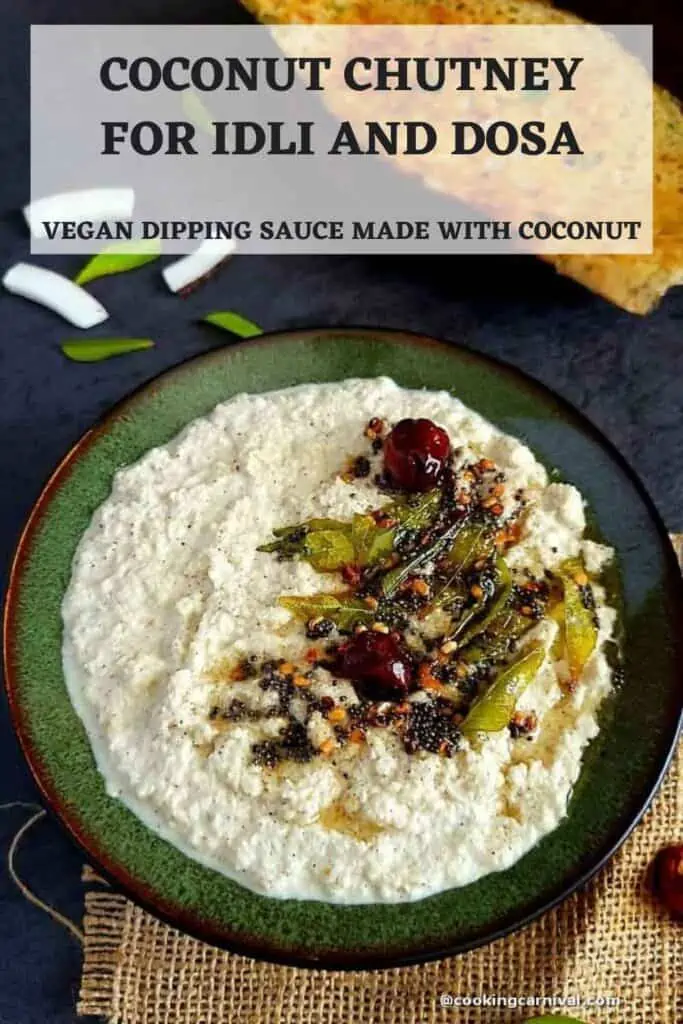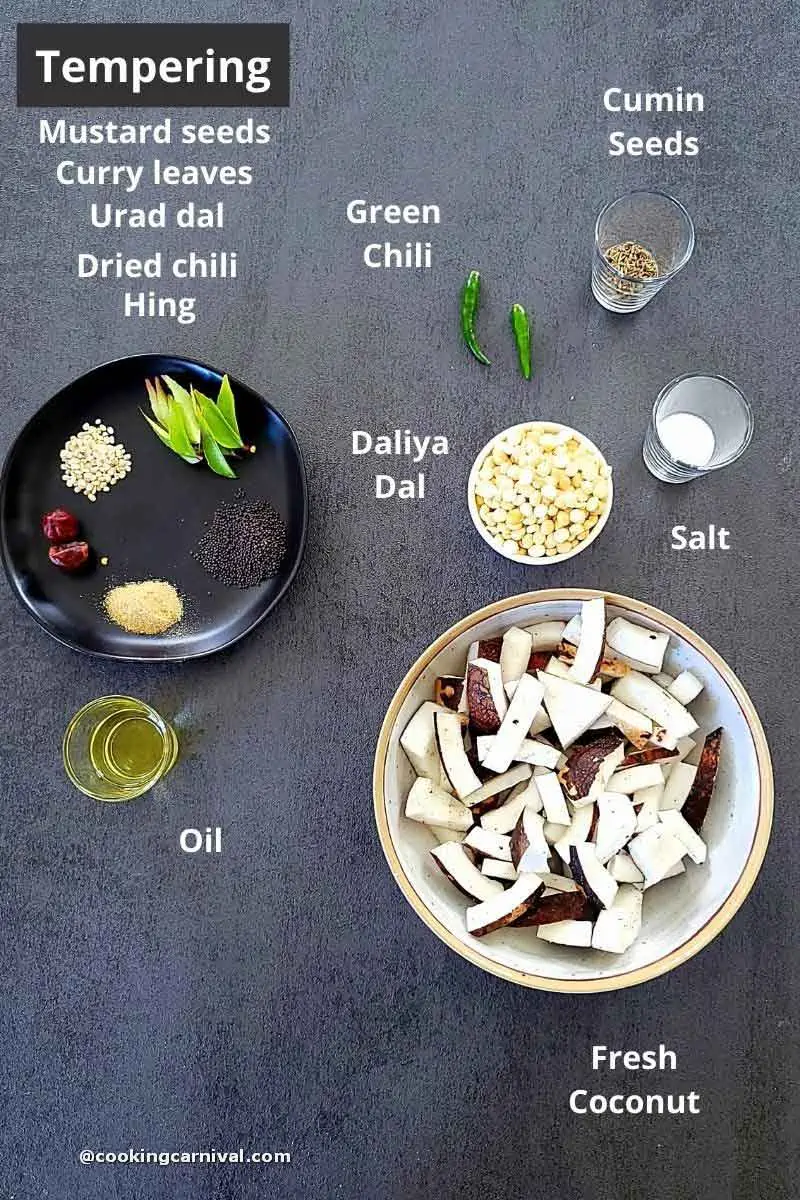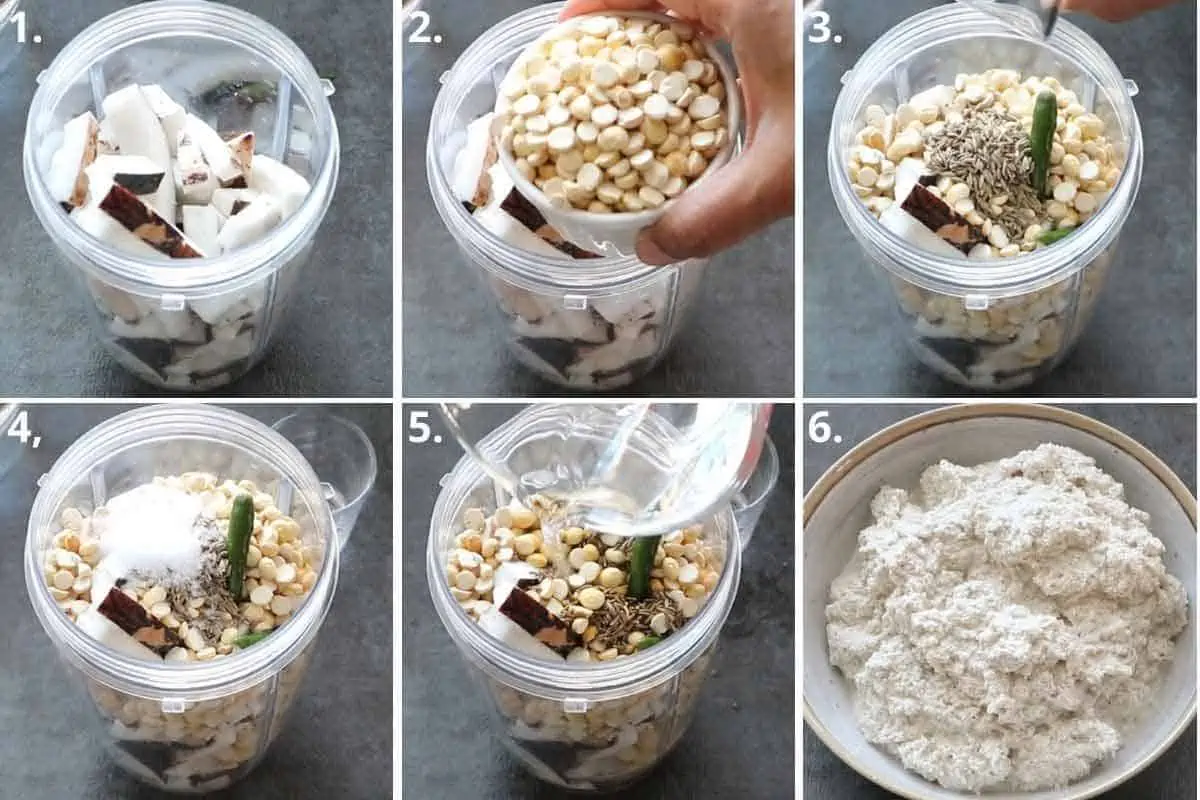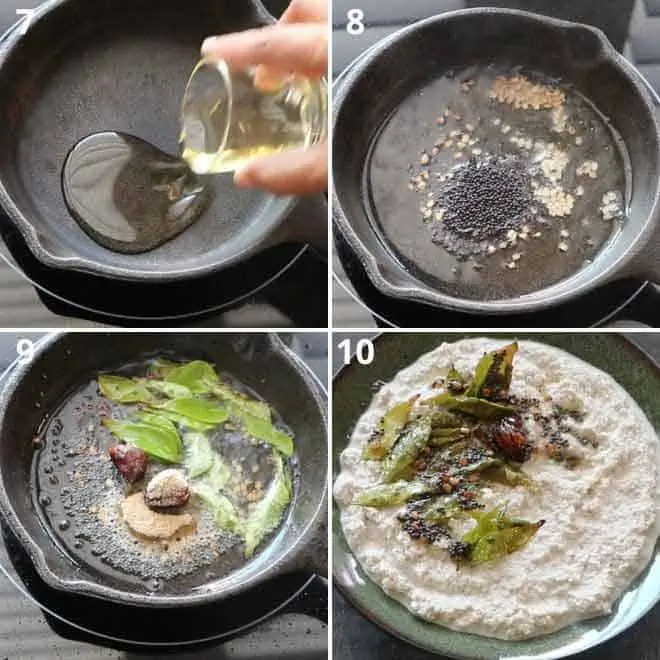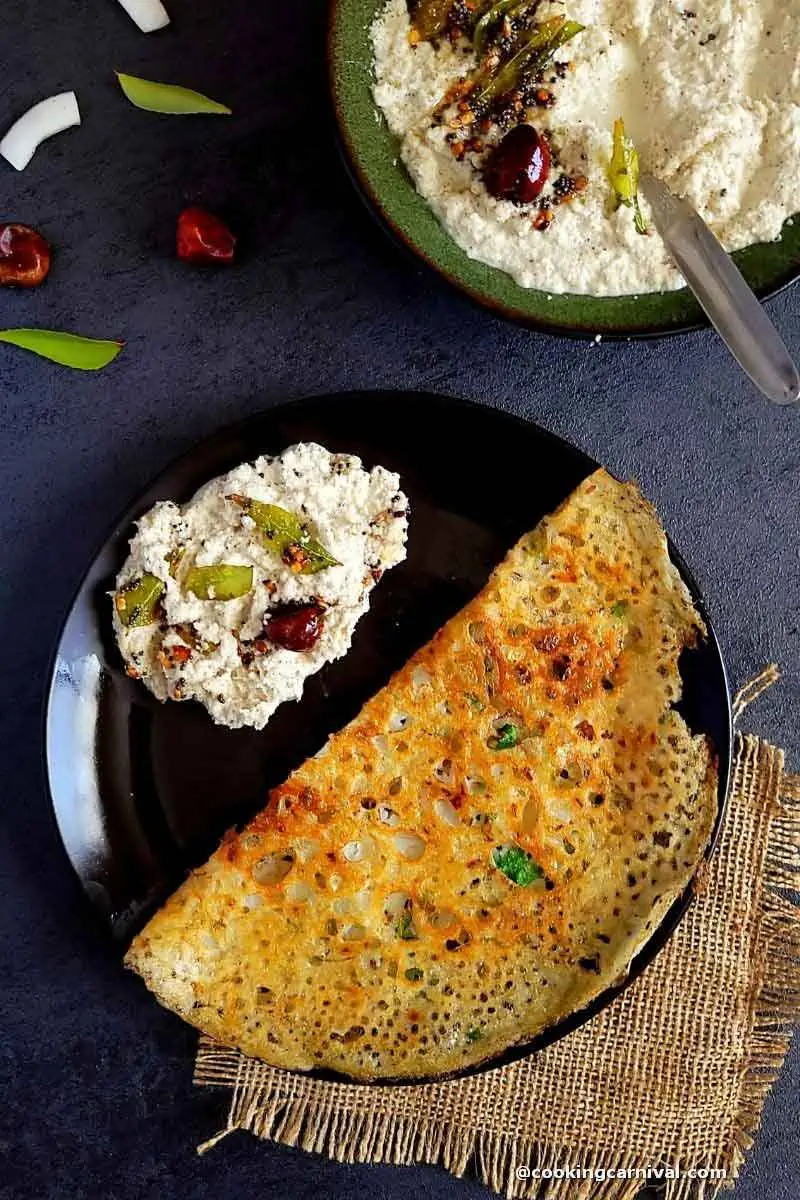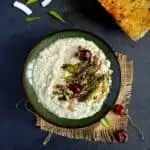This vegan South Indian Chutney is a lightly spiced, nutty dipping sauce with fresh flavors. It is absolutely easy to make with only a few ingredients. On top of that, it can be easily adapted to many interesting and delicious flavors by adding just an ingredient or two. Follow this recipe to learn Nariyal chutney with my easy-to-follow step-by-step photos and a video! Don’t blame us if you get addicted to it. 😉 Chutneys are an essential part of India and can be made with different ingredients. I have shared many chutney recipes here on the blog like tomato, cilantro, peanut, onion chutneys, and that isn’t even my full list! All of these delicious chutneys are used to enhance the flavors of various meals. And today I am here with the white coconut chutney recipe which is very famous all over India.
What is coconut chutney?
Coconut chutney is a traditional South Indian condiment made with grinding fresh coconut meat, chilies, roasted Bengal gram, cumin seeds, and salt. It is later tempered with oil, mustard seeds, urad dal, dried red chilies, asafetida, and curry leaves. Whether you call this chutney idli chutney, dosa chutney, uttapam chutney, medu vada chutney, or white chutney, it tastes heavenly delicious. The star ingredient in this chutney is coconut. Even though coconut is rich in calories and fat, it’s filled with so much nutritional value.
This recipe for Coconut Chutney
is vegan and can be made gluten-free by skipping the hingeasy to make in only 15 minutes and can be flavored to your preferenceIt requires simple pantry ingredientsMakes a wonderful pair with idli, dosa, uttapam, vada, and many more!Tastes better when made-aheadKeeps for up to one week in the fridge and can even be frozen for up to 3 months.
Ingredients required
Coconut: Fresh coconut is what goes into the chutney and I highly recommend you to use fresh coconut. Sure this coconut chutney can be made with frozen coconut and dried coconut. But the original taste comes from the fresh one. Fresh coconut is available in Indian stores.Roasted gram (also known as Daliya dal): Another key element in this condiment. These are different from the chana dal (Bengal gram lentils). It adds an earthy flavor and gives body to the chutney. It binds the coconut chutney. If you do not add the roasted gram, the water will separate from the chutney after some time, and it will become watery.Green Chillies: Gives a little bit of kick to the chutney. Adjust the amount as per your taste.Cumin seeds: Adds earthy flavors.Tempering (Tadka): For the best of taste, tempering is a key step, so do not compromise on this. For this, you will need oil, mustard seeds, urad dal, hing, curry leaves, and dried red chilies.
Step by step process
Add coconut, roasted gram lentils, chili, cumin seeds, salt, and 2 cups of water to a blender and blend until you get a smooth chutney. Add more water if needed to get to the desired consistency.Note – Do not over blend the chutney while grinding else the coconut will let out oil and make the chutney greasy and the texture will be very weird.Take out the chutney in a serving bowl.
Now let’s prepare the tempering.Heat oil in a pan over medium heat. Add urad dal. Let it turn lightly golden.Now add mustard seeds and allow them to pop. Turn the heat off and then add asafetida(hing), red dried chilies, and curry leaves. Be careful as you add curry leaves as the oil may splatter.Pour the tadka over the chutney and stir in.Serve it with Idli, Dosa, Uttapam, upma, Paniyaram, or pongal.
If you do not have daliya/roasted gram dal you can dry roast raw chana dal. Soak it in water for 30 minutes, drain and add to the recipe.Peanuts, almonds, cashews are also great substitutes for roasted gram dal.To make this chutney gluten-free, skip adding asafoetida or hing.Instead of green chilies, you can also use serrano peppers, jalapeno, or any spicy chilies.Some add garlic, ginger, tamarind, shallots, lemon juice, or yogurt to this chutney. It’s a personal preference. But the basic coconut chutney is made without these ingredients and my family like it this way only.Do not over-process the chutney while grinding else the coconut will let out oil and make the chutney greasy and the texture will be very weird.You can even add some buttermilk instead of water while grinding.The consistency of the chutney can be thin or thick. It’s a personal choice.You can also serve the coconut chutney without the tadka. Use coconut oil to temper, it gives a good enhancing flavor to this Indian chutney. You can also use any neutral cooking oil.Start with 2 cups of water and add more as needed. Add water until it blends to your desired consistency.For a little tang, feel free to add a few teaspoons of tamarind or fresh lime/lemon juice.Refrigerate the chutney in an airtight container for up to one week. Or freeze for up to 3 months and thaw overnight in the fridge. Some prefer to remove the brown bits from the fresh coconut to give proper white color to the chutney and not cream color But I prefer it with skin.You can easily halve, double, or triple the recipe per your needs.To make red coconut chutney, use red dried chilies instead of green chilies.To make green coconut chutney, add some cilantro with all the ingredients.
Variations
If you love variations in chutneys, then consider adding these ingredients for different flavors and tastes.
Raw mango,MintPeanutCilantroTomatoOnionTo make this coconut chutney resturant style, used cashew instead of roasted bengal gram.
Add them in quantity depending upon the flavor intensity you like.
Serving Suggestions
Serve these chutneys with your favorite idli, dosa, Pongal, pesarattu, vada, upma, uttapam, and paniyarams.
More chutney recipe
Raw mango chutneyMint coconut chutneyOnion chutneyPeanut chutneyBombay sandwich chutney
Warm regards, You can also FOLLOW me on FACEBOOK, INSTAGRAM, and PINTEREST for more fabulous recipes and updates. Subscribe to our YouTube Channel for tasty and easy video recipes. Dhwani.
